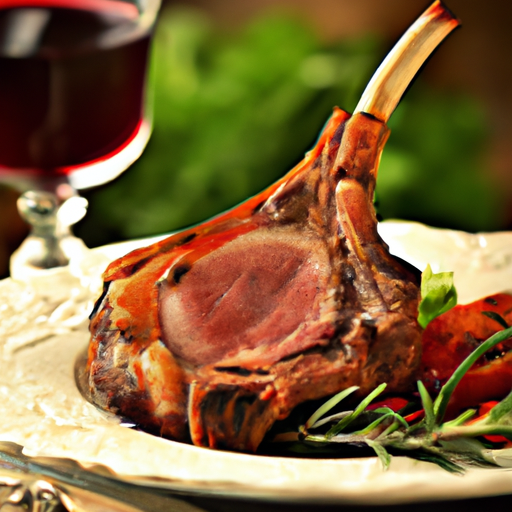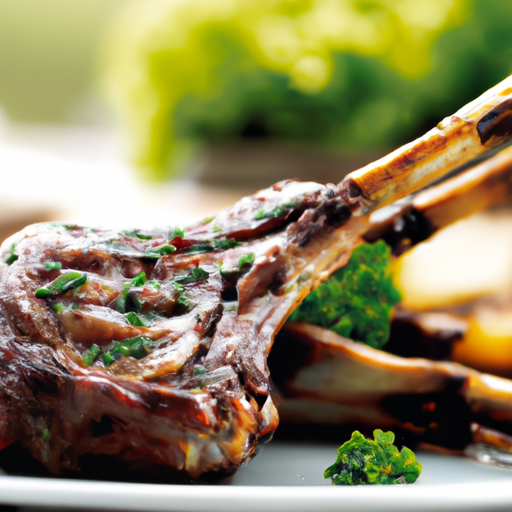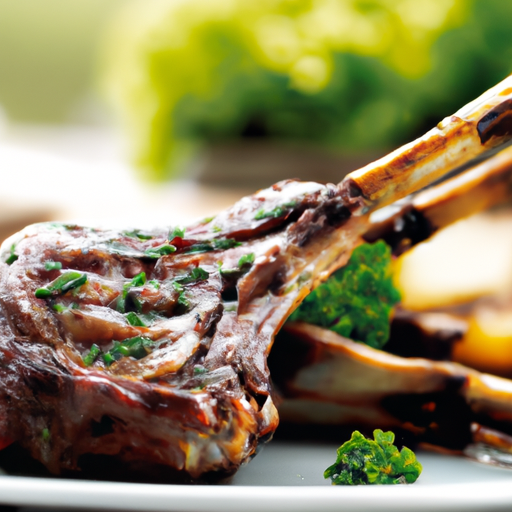If you’re a lamb lover but struggle with determining the right cooking times, look no further. With “Easy Ways to Determine Cooking Times for Lamb”, you’ll never have to worry about overcooking or undercooking your lamb again. This handy guide provides simple and foolproof methods to ensure that your lamb is cooked to perfection, whether you prefer rare, medium, or well-done. Say goodbye to guesswork and hello to perfectly cooked lamb every time!
Determining Cooking Times for Lamb

The Importance of Cooking Times
When it comes to cooking lamb, knowing the proper cooking times is crucial to achieving the perfect cook. Cooking times not only ensure that the lamb is tender, juicy, and flavorful, but they also help to avoid the pitfall of undercooked or overcooked meat. By understanding and implementing the appropriate cooking times, you can strike the right balance between flavor and texture, resulting in a delicious and satisfying dish.
Factors Affecting Cooking Times
Several factors can influence the cooking times of lamb. Understanding these factors will enable you to make the necessary adjustments and ensure a successful outcome.
Weight and Thickness of the Lamb
The weight and thickness of the lamb are significant factors that can affect the cooking time. A larger piece of lamb will require more time to cook properly compared to a smaller cut. Additionally, thicker cuts of lamb will take longer to cook through than thinner cuts.
Starting Temperature of the Lamb
The starting temperature of the lamb before cooking plays a role in determining the cooking time. If the lamb is taken straight from the refrigerator, it will require more time to reach the desired level of doneness compared to lamb that has been brought to room temperature before cooking.
Desired Level of Doneness
The desired level of doneness is a subjective choice and will vary from person to person. Some prefer their lamb cooked to a rare or medium-rare level, while others prefer it well-done. The desired level of doneness will impact the cooking time, as more cooking time is needed to reach higher levels of doneness.
Cooking Method and Equipment
The cooking method and equipment used can also influence the cooking time. Different cooking methods, such as oven roasting, grilling, pan-frying, slow cooking, pressure cooking, and sous vide, may require different lengths of cooking time. Additionally, the equipment used, such as a conventional oven, stovetop grill, or slow cooker, can affect how quickly the lamb cooks.
Weight and Thickness of the Lamb
When determining the cooking time for lamb, it is essential to consider the weight of the meat. A larger cut of lamb will naturally take longer to cook compared to a smaller portion. It’s a good idea to consult a reliable recipe or cooking guide that provides an estimate of the cooking time based on weight.
In addition to weight, the thickness of the lamb also affects the cooking time. Thicker cuts will require more time to cook through to the desired level of doneness. It is essential to account for both weight and thickness when estimating the cooking time for your lamb.

Starting Temperature of the Lamb
The starting temperature of the lamb is another crucial factor in determining cooking times. It is best to allow the lamb to come to room temperature before cooking, as this promotes even cooking throughout the meat. If the lamb is taken straight from the refrigerator, it will take longer to cook, as the center will be colder. Allowing the lamb to come to room temperature will help to ensure more accurate and consistent cooking times.
Desired Level of Doneness
Before cooking your lamb, it is essential to determine your preferred level of doneness. Lamb can be cooked to various degrees, ranging from rare to well-done. The cooking time will vary depending on the desired level of doneness.
For rare lamb, the internal temperature should be around 120 to 125°F (49 to 52°C), resulting in a bright pink center. Medium-rare lamb has an internal temperature of 130 to 135°F (54 to 57°C) and will have a slightly pink center. If you prefer medium lamb, aim for an internal temperature of 140 to 145°F (60 to 63°C), resulting in a pink center. Well-done lamb will have an internal temperature of 160°F (71°C) or higher.
Cooking Method and Equipment
The cooking method and equipment you choose will greatly impact the cooking time for lamb. Here are some common cooking methods and their corresponding cooking times:
Oven Roasting
Oven roasting is a popular method for cooking lamb and requires a preheated oven. The cooking time will vary depending on the weight, thickness, and desired level of doneness. As a general guideline, roast lamb at 325°F (163°C) for 20 minutes per pound for medium-rare. Adjust the cooking time accordingly for different levels of doneness and the size of the cut.
Grilling or Barbecuing
Grilling or barbecuing lamb over direct heat can result in beautifully charred and flavorful meat. Cooking times will depend on the thickness of the lamb and the desired level of doneness. On average, grill lamb chops for 6 to 8 minutes per side for medium-rare, adjusting accordingly for larger cuts or different levels of doneness.
Pan-frying or Sautéing
Pan-frying or sautéing lamb allows for quick and convenient cooking. The cooking time will depend on the thickness of the lamb and the desired level of doneness. For example, cook lamb chops in a hot skillet for 3 to 4 minutes per side for medium-rare.
Slow Cooking
Slow cooking is an excellent method for tenderizing tougher cuts of lamb. In a slow cooker or crockpot, lamb can be cooked for several hours on low heat until it reaches the desired level of doneness and tenderness. Cooking times will vary depending on the size and cut of the lamb, as well as the settings on your slow cooker.
Pressure Cooking
Pressure cooking is a time-saving method that can cook lamb quickly and efficiently. Cooking times will vary based on the specific recipe, cut of lamb, and desired level of doneness. Consult the user manual for your pressure cooker or follow a reliable recipe for the best results.
Sous Vide
Sous vide cooking involves vacuum-sealing the lamb and cooking it in a water bath at a precise temperature for an extended period. This method ensures consistent and even cooking. The cooking time will depend on the thickness and desired level of doneness. Sous vide recipes typically provide specific cooking times and temperatures to achieve the desired results.
Different Cuts of Lamb
Lamb can be found in a variety of cuts, each with its own unique qualities and cooking times. Here are some popular cuts of lamb:
Leg of Lamb
The leg of lamb is a classic and versatile cut, often roasted or grilled. Due to its size, it may take longer to cook compared to other cuts. Adjust cooking times based on the weight, thickness, and desired level of doneness.
Lamb Chops
Lamb chops are tender and flavorful cuts that are perfect for grilling or pan-frying. Cooking times will vary depending on the thickness and desired level of doneness. Thinner chops will cook more quickly, while thicker chops may require a longer cooking time.
Lamb Rack
The lamb rack is an elegant and visually appealing cut. It is often roasted or grilled and requires careful attention to cooking times to achieve the desired level of doneness. Cooking times will vary depending on the size of the rack and the desired level of doneness.
Lamb Shoulder
Lamb shoulder is a flavorful and budget-friendly cut that benefits from slow cooking methods, such as braising or roasting. Due to its connective tissues, it requires a longer cooking time to become tender and succulent.
Lamb Shank
Lamb shanks are a rich and flavorful cut that is often braised or slow-cooked. The connective tissues in the shanks require a longer cooking time to become tender and delicious.
Ground Lamb
Ground lamb is a versatile option that can be used in various recipes, such as burgers, meatballs, or shepherd’s pie. Due to its small size and loose texture, ground lamb cooks quickly and should be cooked until it reaches an internal temperature of 160°F (71°C) for food safety.
Testing for Doneness
To ensure that your lamb is cooked to perfection, it is essential to test for doneness. Here are two common methods:
Using a Meat Thermometer
Using a meat thermometer is the most accurate way to determine the doneness of your lamb. Insert the thermometer into the thickest part of the meat, avoiding any bones, and check the internal temperature. Refer to the desired level of doneness and its corresponding internal temperature to determine if your lamb is cooked to your liking.
Using the Fork Test
The fork test involves using a fork to gauge the tenderness and doneness of the lamb meat. Insert a fork into the thickest part of the meat and gently twist it. If the fork easily goes in and out with little resistance, the lamb is likely cooked to a more tender medium-rare or medium level. If more resistance is felt, the lamb may be closer to being well-done.
Residual Cooking and Resting Time
After removing your lamb from the heat source, it is important to note that it will continue to cook internally due to residual heat. This effect is known as residual cooking. To avoid overcooking, it is recommended to remove the lamb from the heat source when it is slightly below the desired level of doneness.
Additionally, allowing the lamb to rest for a few minutes before carving or serving is crucial. Resting allows the juices to redistribute within the meat, resulting in a more flavorful and juicy final dish. Resting times vary depending on the size and cut of the lamb, but a general guideline is to let it rest for 5 to 10 minutes.
In summary, determining the cooking times for lamb is essential for achieving the perfect cook and avoiding undercooked or overcooked meat. Factors such as weight and thickness, starting temperature, desired level of doneness, cooking method, and equipment all play a role in determining the cooking time. By understanding these factors and using reliable cooking references, you can confidently cook lamb to perfection every time. Remember to test for doneness using a meat thermometer or the fork test, and allow the lamb to rest before serving. Happy cooking and enjoy your delicious lamb dishes!
